You know, some superheroes have it better than others when it comes to origins. Spider-Man was bitten by a radioactive spider; irritating, but hardly traumatic. Superman’s rocketship ride to Earth from Krypton? Maybe crippling emotionally, but hey, he was young – he adjusted. When it come to origins, nobody had it worse than the Spectre, who had to be beaten and drowned before getting his superpowers. Makes that whole “gamma-bomb explosion” deal look pretty good in comparison, doesn’t it? With Halloween just around the corner, let’s take a glance at DC Comics’ resident “spookerhero,” The Spectre.
As discussed here many times in previous installments, in 1939 publishers everywhere were scrambling to cash in on the unprecedented success of National Comics’ Superman and Batman. National’s sister company, All-American, was about to make their presence felt on the newsstands with their triple threat of super-types: the Green Lantern, Hawkman and the Flash. National’s competitors weren’t sitting on their hands either; Timely had already introduced Bill Everett’s Sub-Mariner and Carl Burgos’ Human Torch, and it was only a short while until Fawcett would unleash Captain Marvel on the world as well. National had their fair share of mysterious adventurers like the Crimson Avenger and the Sandman, but they weren’t really super-heroes (at least not yet – in the months to come, both the Crimson Avenger and the Sandman would find their cloak-and-fedora, pulp-styled modus operandi a thing of the past, and find themselves saddled with skintight long underwear and apple-cheeked boy sidekicks.). In an effort to corner the market, National set out to find superhero series for their two remaining monthly books: ADVENTURE COMICS and MORE FUN COMICS. ADVENTURE would soon see the debut of the Hourman, while MORE FUN would be the home of, you guessed it, the Spectre.
Created by writer Jerry Siegel (fresh from the success of Superman) and artist Bernard Baily, the Spectre makes his first appearance in February 1940, in MORE FUN COMICS #52. In the debut episode, hard-boiled police detective Jim Corrigan is set to marry his girlfriend, socialite Clarice Winston. Unfortunately, work keeps getting in the way: namely, singlehandedly busting up the operations of local crime boss “Gat” Benson. Before long, “Gat” has had enough, and kidnaps Corrigan and his fiancee.
In what has to be the grimmest origin sequence in comics ever, Corrigan is pistol-whipped, then stuffed in a barrel and covered with cement, and then dropped to the bottom of the river. And that’s it for Jim Corrigan. At least, it should be.
Corrigan comes to and finds himself hurtling through space, stopping just short of what looks like the afterlife, where a voice informs him that “[his] mission on Earth is unfinished…You shall remain earthbound battling crime on your world with supernatural powers, until all vestiges of it are gone!”
Before Corrigan can protest, he’s hurtling back down towards Earth, winding up at the bottom of the river again, standing next to the barrel containing his own corpse. Eeugh.
The sight of his own dead hand sticking out of the cracked barrel understandably fires up Corrigan, and he heads off to enact a measure of retribution. Along the way, he discovers he can fly, turn invisible, and walk through solid walls. Corrigan makes it back to the Benson’s hideout just as the goons are about to murder Clarice. Corrigan stares one of the thugs in the eyes, and he drops dead from fright. Another of the gangsters opens fire on Corrigan, but to no effect. When the gangster merely touches Corrigan, his clothing and flesh wither away to nothing, and the thug is quickly reduced to a mere skeleton, which collapses to the ground in a heap.
When “Gat” himself tries to amscray, he’s met up with duplicate after duplicate of Corrigan, and with a touch from them, he lapses into unconsciousness, and following that, mindless catatonia (which, compared to some later opponents of the Spectre, is getting off easy, quite frankly).
Before “Gat” passes out, he fires off a shot, critically wounding Clarice, but with a touch of his hand, Corrigan heals the wound, saving her life.
But it’s hardly a happy ending for Jim Corrigan. Dropping off Clarice, he ends their engagement, and moves out of the apartment he shared with a fellow detective, cutting himself off from all human contact. Finally, Corrigan sews himself a costume for when he battles crime as the Spectre.
(All that power, and he still has to sew? You’d think between the flying, invisibility, wall-walking, death-staring and duplicate-making powers he just got, not to mention when he melted that guy, he’d just be able to snap his fingers and make his new crime-fighting duds appear. Well, apparently not. Guess some things still gotta be done the old-fashioned way.)
Following appearances of the Spectre tended to fall into two categories: either he was cleaning up all-too-human criminals, which didn’t really provide much of a challenge (it was mostly a matter of legwork), or he was facing more competent, mystical-type kinds of opponents. The mystic battles provided some of the more intriguing imagery, such as this moment from MORE FUN #55, in which the Spectre encounters Zor, another spirit like Corrigan confined to Earth, except devoted to the pursuit of evil. As the two ghosts clash, they grow to tremendous size, first towering over a mountain range, then dwarfing the planets themselves.
Despite the fact that there wasn’t a lot of suspense involved, it was probably the visceral thrill of the Spectre contending with poor mortal criminals that kept readers coming back month after month. Because he certainly wasn’t handling them with kid gloves. One of the messier incidents appeared in MORE FUN COMICS #56, when Jim Corrigan was investigating a wholesaler who was dabbling in extortion. When the wholesaler sends some henchmen to go eliminate Corrigan, Corrigan changes into the Spectre, allows then to try to get away, then grows to enormous size, picks up their car and crushes it to a pulp, then chucks the bloody wad of twisted steel away like a gum wrapper.
(The Spectre must have liked the “car-toss” maneuver, as he’d use it time and again throughout the forties.) Other times, the Spectre would fall back on the old reliable “death-stare,” which could either paralyze or straight-out kill those he used it on.
For a little variety, sometimes he’d just snap his fingers and vaporize the guilty, in a “brilliant flash of color.” Not a lot of room for due process in the Spectre’s world.
The Spectre was popular enough in the early forties to earn a spot in the Justice Society of America, National/All-American’s landmark superhero team appearing in ALL-STAR COMICS. Sometimes JSA writer Gardner Fox had to really stretch to accommodate the darker, larger-than-life style of the Spectre stories into the more grounded storylines of the JSA stories, which usually involved rounding up Nazi spy rings or organized crime bosses.
Still, the Spectre remained a constant in the series until about 1945, when he mysteriously and without explanation stopped showing up at the meetings. The Spectre vanished from the pages of MORE FUN in 1945 as well, having been replaced by Superboy. (The first 19 Spectre stories by Jerry Siegel and Bernard Baily were made available in THE GOLDEN AGE SPECTRE ARCHIVES, one of the best-looking books in the series in terms of quality of reproduction.)
The Spectre stayed vanished until the 1960s, when he, along with the rest of the Justice Society, was revived in the pages of JUSTICE LEAGUE OF AMERICA. The Spectre remained a supporting character for most of the next three decades, most likely for the same reason his original series was discontinued in 1945: it’s hard to convincingly put such an immensely powerful character into any real danger. There have been several noteworthy attempts to give the Spectre a solo series over the years, however. One of the most infamous was the 1974 run in ADVENTURE COMICS by writer Michael Fleisher and artist Jim Aparo.
Fleisher and Aparo hit the series with a vengeance, creating some of the most violent and bloody comics DC had ever published. Criminals in these books casually murdered policemen, bank tellers and innocent bystanders, all happening on panel, mind you.
From a narrative standpoint, the increased brutality of the crooks was necessary so as to justify the somewhat horrendous punishments the Spectre had in store for them, such as slicing them in two with a giant scissors, or melting them like a wax dummy.
Fleisher and Aparo’s Spectre run only lasted nine issues, from #431 to #440, but they’re well worth tracking down, not only for the startling stories, but for some of the most gorgeous art in Jim Aparo’s career.
Probably the best and most thorough exploration of the Spectre began in 1992, with a new SPECTRE series by writer John Ostrander and artist Tom Mandrake.
Ostrander stressed the dichotomy between the human desires and conflicts of Jim Corrigan and the Spectre’s role as the Spirit of Vengeance, occasionally having both aspects of the character manifest at the same time, and in direct opposition. Ostrander also took the character in some surprising new directions, including a story arc in which the Spectre destroyed an entire country in order to eradicate the evil that lay within.
Ostrander and Mandrake’s SPECTRE series ended in 1998 after 62 issues, and closed with a touching and unexpected resolution, as Jim Corrigan was at last released from his role as the Spectre and granted eternal rest. Unfortunately, the entire run of this excellent series is not available in trade collections, but take the time to seek out the back issues. It’s good stuff.

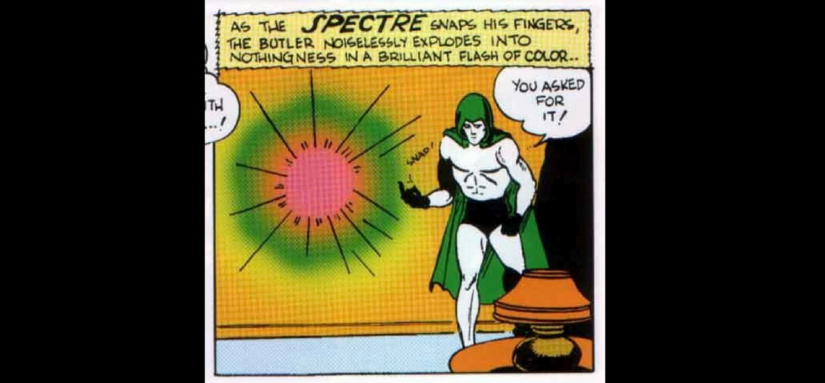
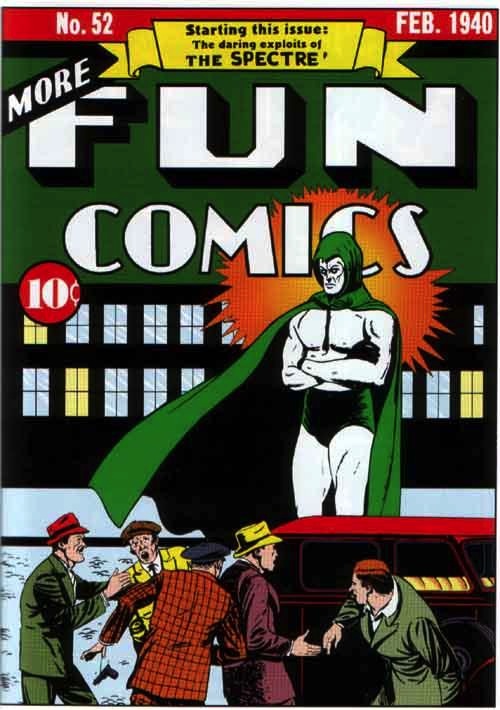



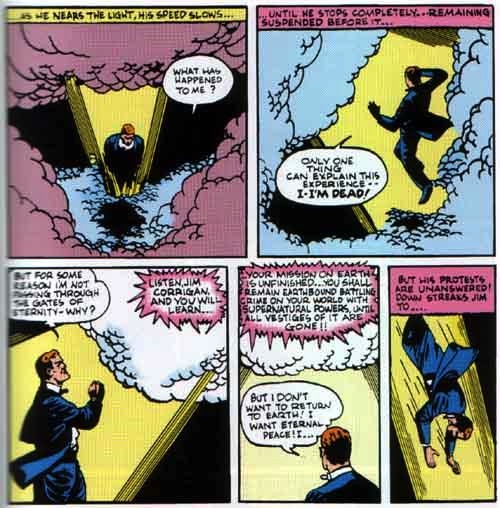
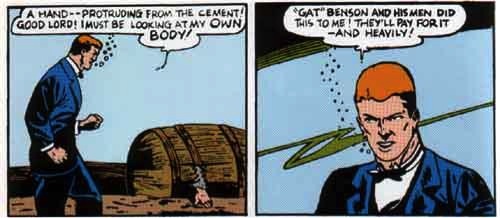

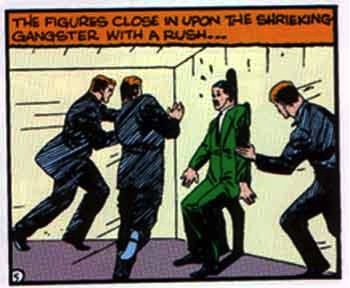

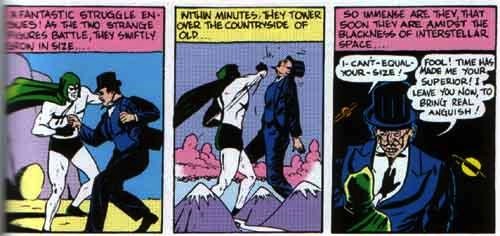

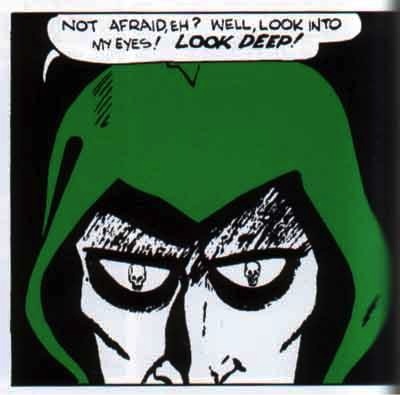
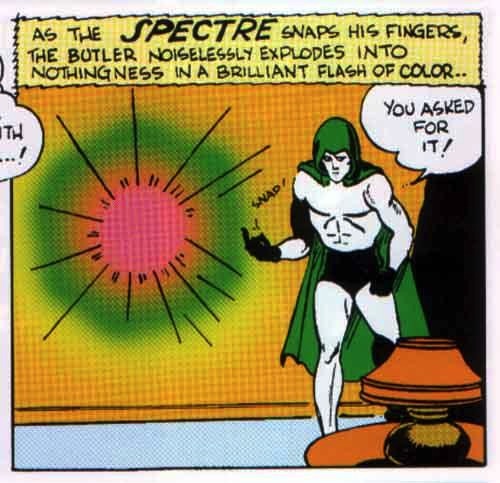

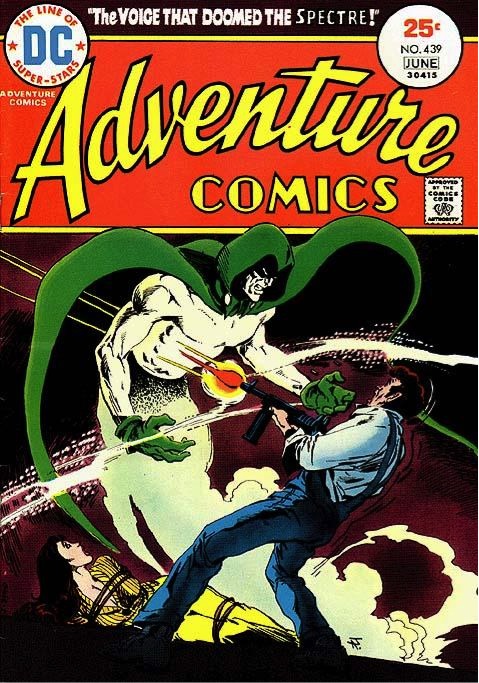
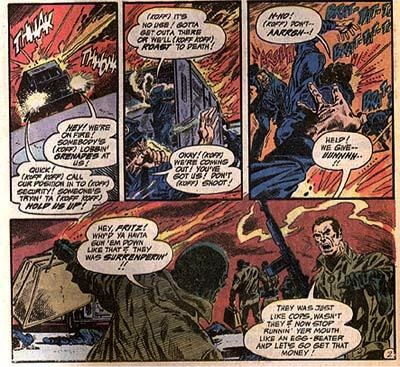
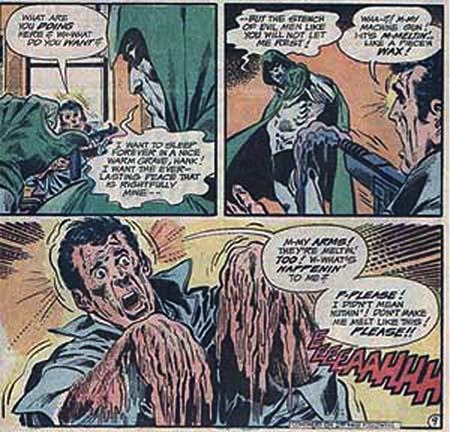

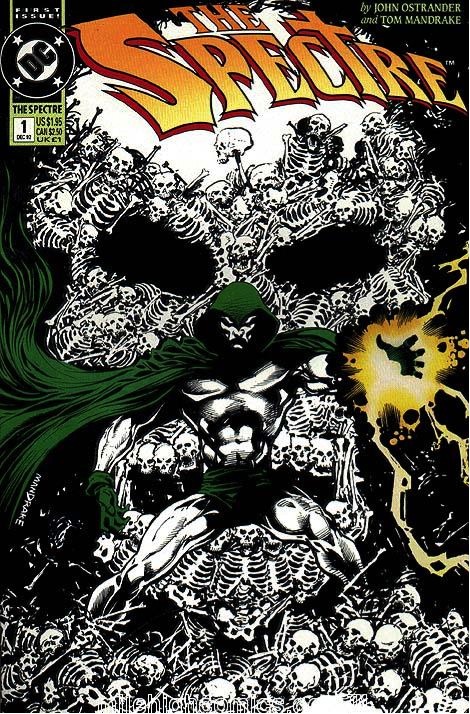
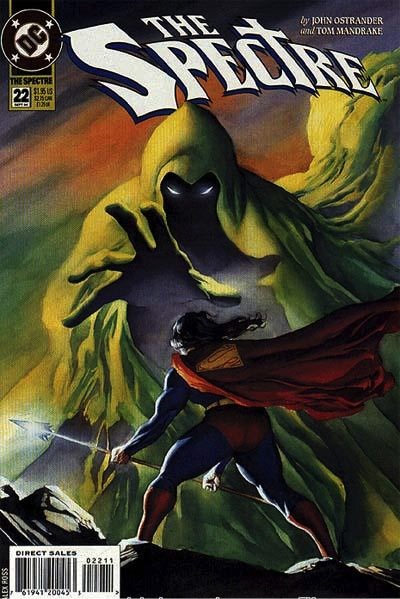
Comments are closed.